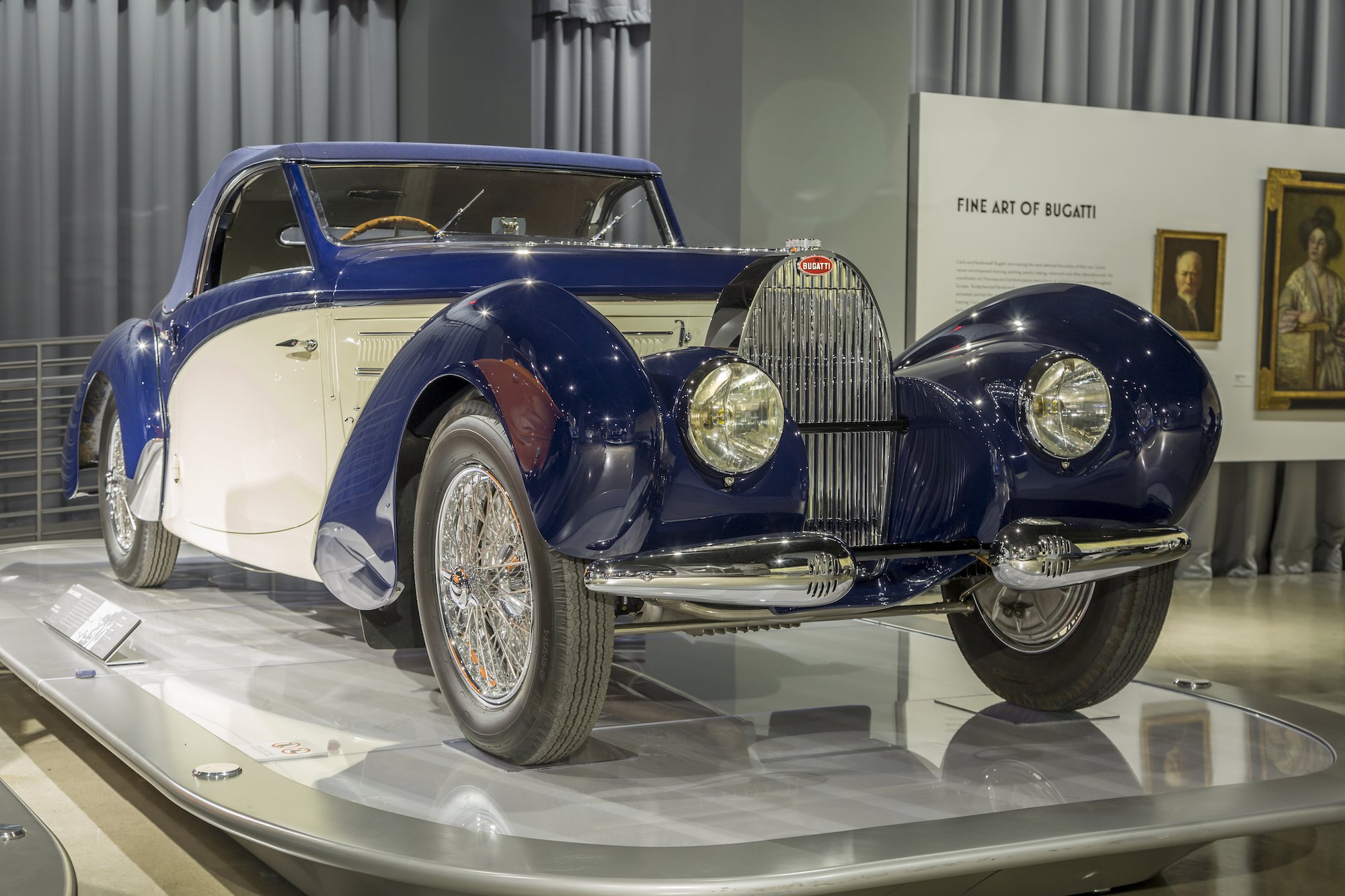1939 Bugatti Type 57C Aravis by Gangloff

The descriptions of the Classic Cars in the Directory were partly generated or supplemented with the help of artificial intelligence (AI). The content may occasionally not always be entirely accurate or factually correct despite careful checking.
The Bugatti Type 57C Aravis by Gangloff 1939 is a truly magnificent vehicle, designed with exquisite attention to detail and boasting a range of technical features that make it a true masterpiece of automotive craftsmanship.
First and foremost, the Type 57C Aravis is powered by a 3.3 liter, six-cylinder engine that produces an impressive 160 horsepower. This engine is paired with a four-speed manual transmission, which allows for precise control over every gear change and ensures that this car is capable of delivering a truly thrilling driving experience.
But the performance of this car is by no means its only impressive feature. The Type 57C Aravis is also designed with a number of technical innovations that help to set it apart from its contemporaries. For example, it features a hydraulic brake system that allows for much more precise and responsive braking than was possible with earlier cars, and the suspension is a semi-elliptical leaf spring system with hydraulic dampers that ensures a smooth and stable ride at all speeds.
Visually, the Type 57C Aravis is a stunning work of art, with a sleek and streamlined body that is both elegant and sporty. The body is constructed from lightweight aluminum, which helps to reduce weight and improve performance, and it features a number of distinctive design elements that help to make it instantly recognizable as a Bugatti.
One of the most striking features of the Type 57C Aravis is its massive, oval-shaped radiator grille, which is flanked by a pair of large headlights and topped with the classic Bugatti emblem. The body is also characterized by its long, sweeping lines and flowing curves, which give it a sense of fluidity and motion even when it is standing still.
Inside the cabin, the Type 57C Aravis is equally impressive, with a luxurious and well-appointed interior that is full of thoughtful touches and high-quality materials. The seats are upholstered in sumptuous leather, and the dashboard is finished in polished wood and features a range of gauges and controls that allow for precise monitoring of the car's performance.
All in all, the Bugatti Type 57C Aravis by Gangloff 1939 is a true masterpiece of engineering and design, with a range of technical features and artistic flourishes that make it one of the most beautiful and desirable classic cars in the world. Whether you are a fan of automotive history or simply appreciate fine craftsmanship and beautiful design, this car is sure to capture your heart and imagination.
Milestones
- Introduction of the Bugatti Type 57C Aravis in 1939 - Production limited to just three units due to the outbreak of World War II - The Aravis features a coachwork designed by Gangloff - Its design is characterized by a long and flowing hood, sharply sloping windshield, and tapered rear - The grille of the Aravis is distinct with its vertical bars and Bugatti's iconic horseshoe shape - The Aravis is based on the 57C chassis, which has a supercharged 3.3 liter straight-eight engine - The engine is capable of producing 160 horsepower, making it one of the fastest cars of its time - The Aravis is often considered a masterpiece of Art Deco design and craftsmanship - One of the three original Aravis models still exists today, and is considered a prized possession of car collectors worldwide.Technical
- The Bugatti Type 57C Aravis was produced by the French automaker Bugatti in 1939. - It was a two-door coupe with a body designed by Swiss coachbuilder Gangloff. - The car was named after the Aravis mountain range in the French Alps. - The chassis of the Type 57C Aravis was based on the Type 57, which had been introduced in 1934. - The Type 57C Aravis was powered by a 3.3-liter inline-eight engine with a supercharger, which produced around 160 horsepower. - The car had a four-speed manual transmission and rear-wheel drive. - The Type 57C Aravis had a top speed of around 100 mph. - The body of the car was made of aluminum and steel, with a distinctive curved roofline and open rear wheel arches. - The interior of the car featured leather seats, a wood dashboard, and a Jaeger speedometer. - Only a handful of Type 57C Aravis were produced before production was halted due to World War II.